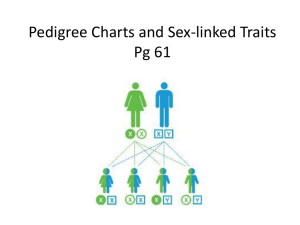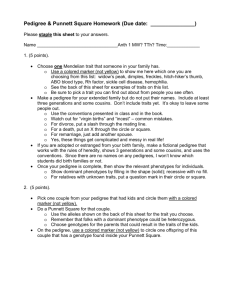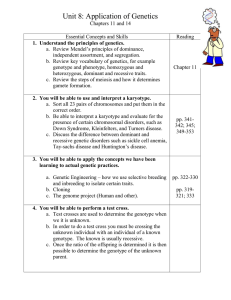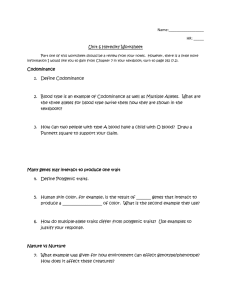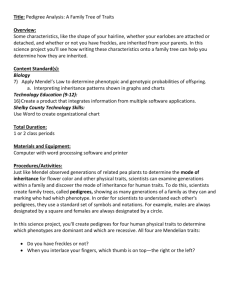Pedigree Project: Family Traits & Genetics
advertisement
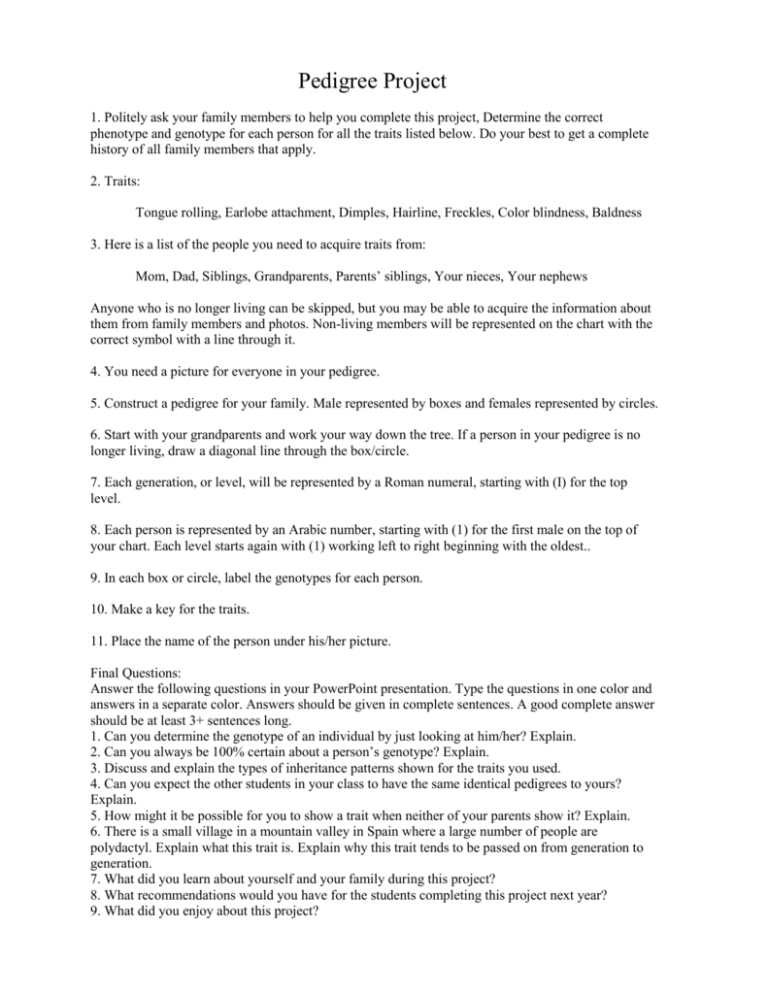
Pedigree Project 1. Politely ask your family members to help you complete this project, Determine the correct phenotype and genotype for each person for all the traits listed below. Do your best to get a complete history of all family members that apply. 2. Traits: Tongue rolling, Earlobe attachment, Dimples, Hairline, Freckles, Color blindness, Baldness 3. Here is a list of the people you need to acquire traits from: Mom, Dad, Siblings, Grandparents, Parents’ siblings, Your nieces, Your nephews Anyone who is no longer living can be skipped, but you may be able to acquire the information about them from family members and photos. Non-living members will be represented on the chart with the correct symbol with a line through it. 4. You need a picture for everyone in your pedigree. 5. Construct a pedigree for your family. Male represented by boxes and females represented by circles. 6. Start with your grandparents and work your way down the tree. If a person in your pedigree is no longer living, draw a diagonal line through the box/circle. 7. Each generation, or level, will be represented by a Roman numeral, starting with (I) for the top level. 8. Each person is represented by an Arabic number, starting with (1) for the first male on the top of your chart. Each level starts again with (1) working left to right beginning with the oldest.. 9. In each box or circle, label the genotypes for each person. 10. Make a key for the traits. 11. Place the name of the person under his/her picture. Final Questions: Answer the following questions in your PowerPoint presentation. Type the questions in one color and answers in a separate color. Answers should be given in complete sentences. A good complete answer should be at least 3+ sentences long. 1. Can you determine the genotype of an individual by just looking at him/her? Explain. 2. Can you always be 100% certain about a person’s genotype? Explain. 3. Discuss and explain the types of inheritance patterns shown for the traits you used. 4. Can you expect the other students in your class to have the same identical pedigrees to yours? Explain. 5. How might it be possible for you to show a trait when neither of your parents show it? Explain. 6. There is a small village in a mountain valley in Spain where a large number of people are polydactyl. Explain what this trait is. Explain why this trait tends to be passed on from generation to generation. 7. What did you learn about yourself and your family during this project? 8. What recommendations would you have for the students completing this project next year? 9. What did you enjoy about this project?



